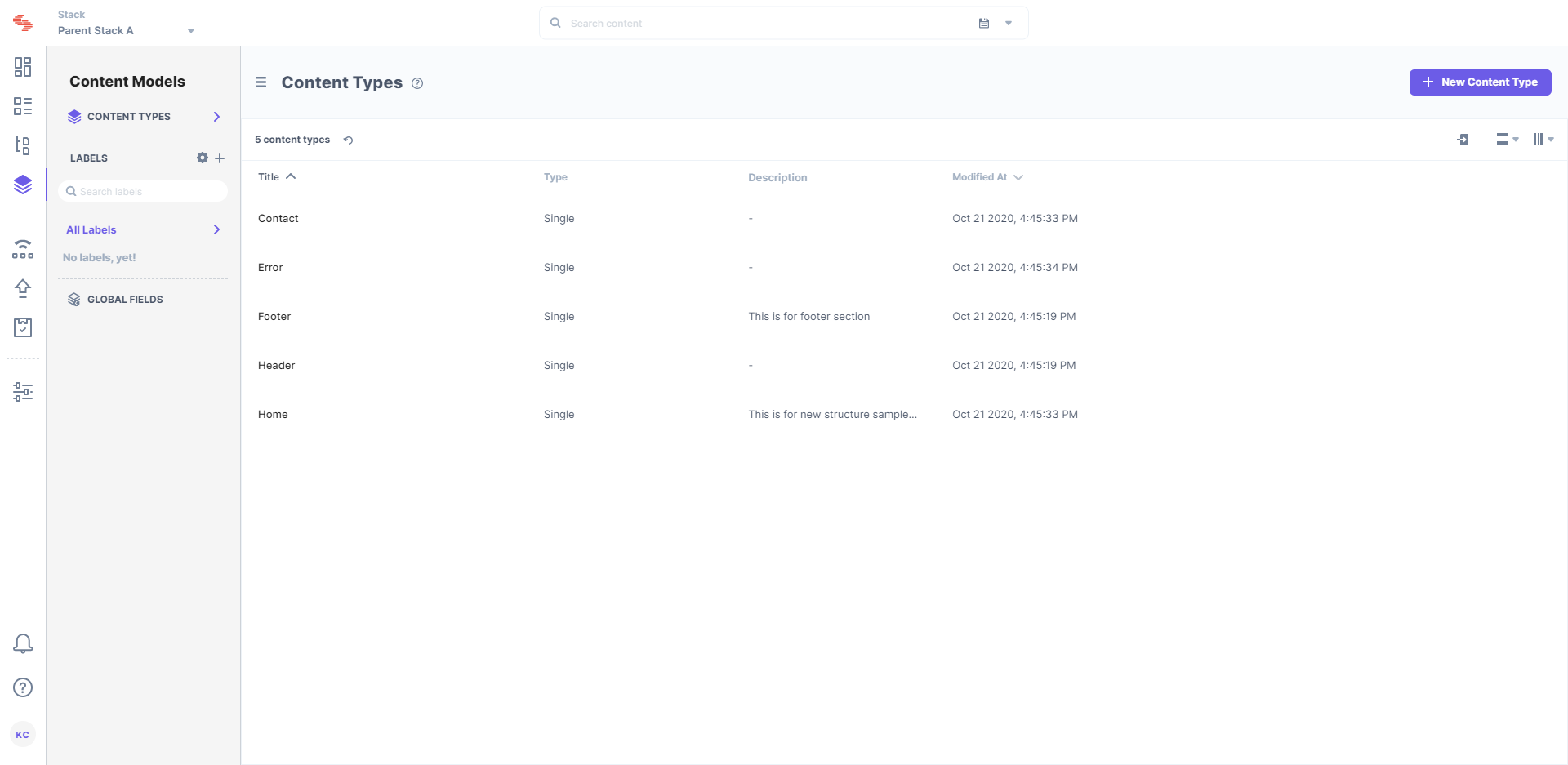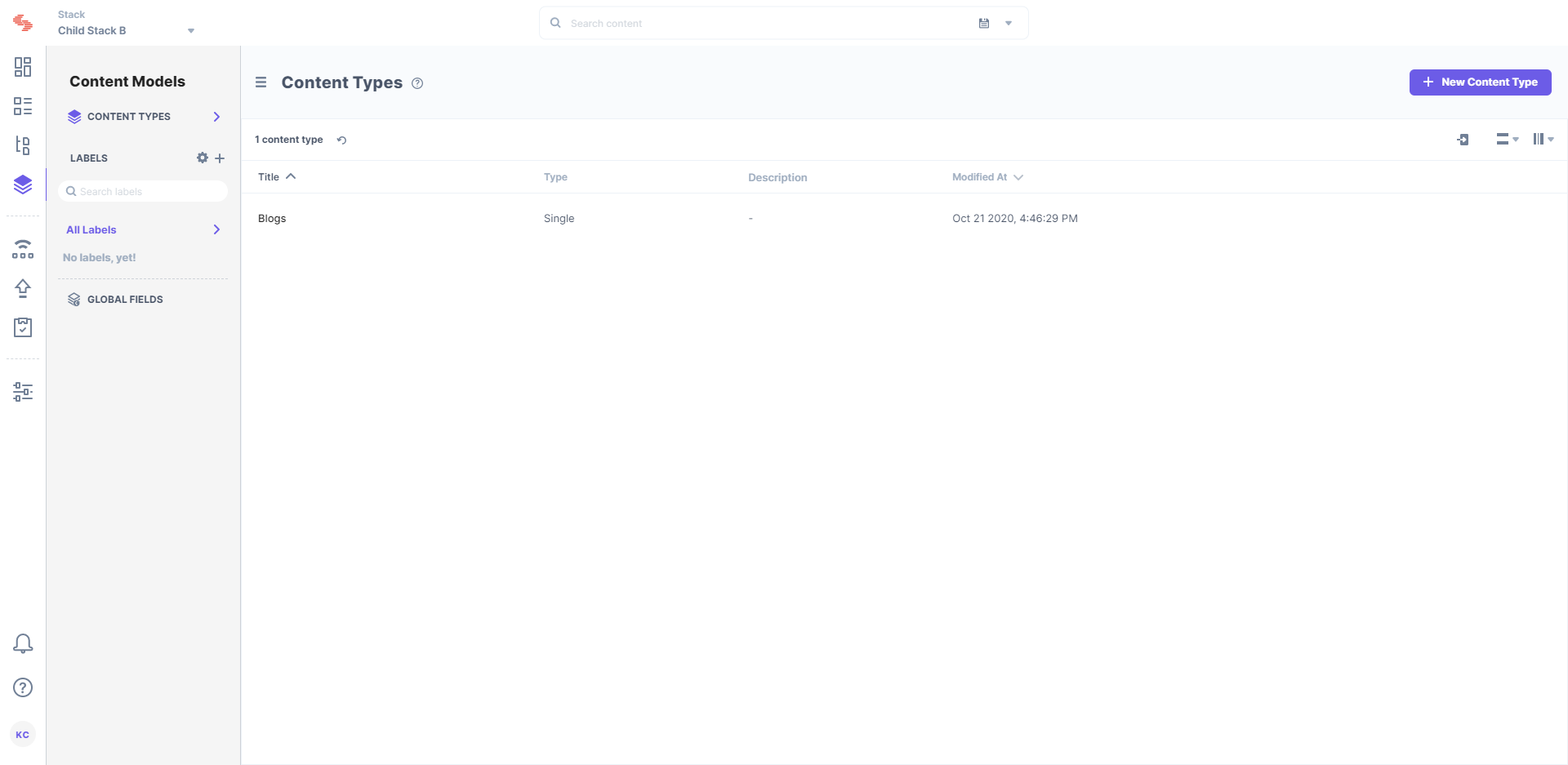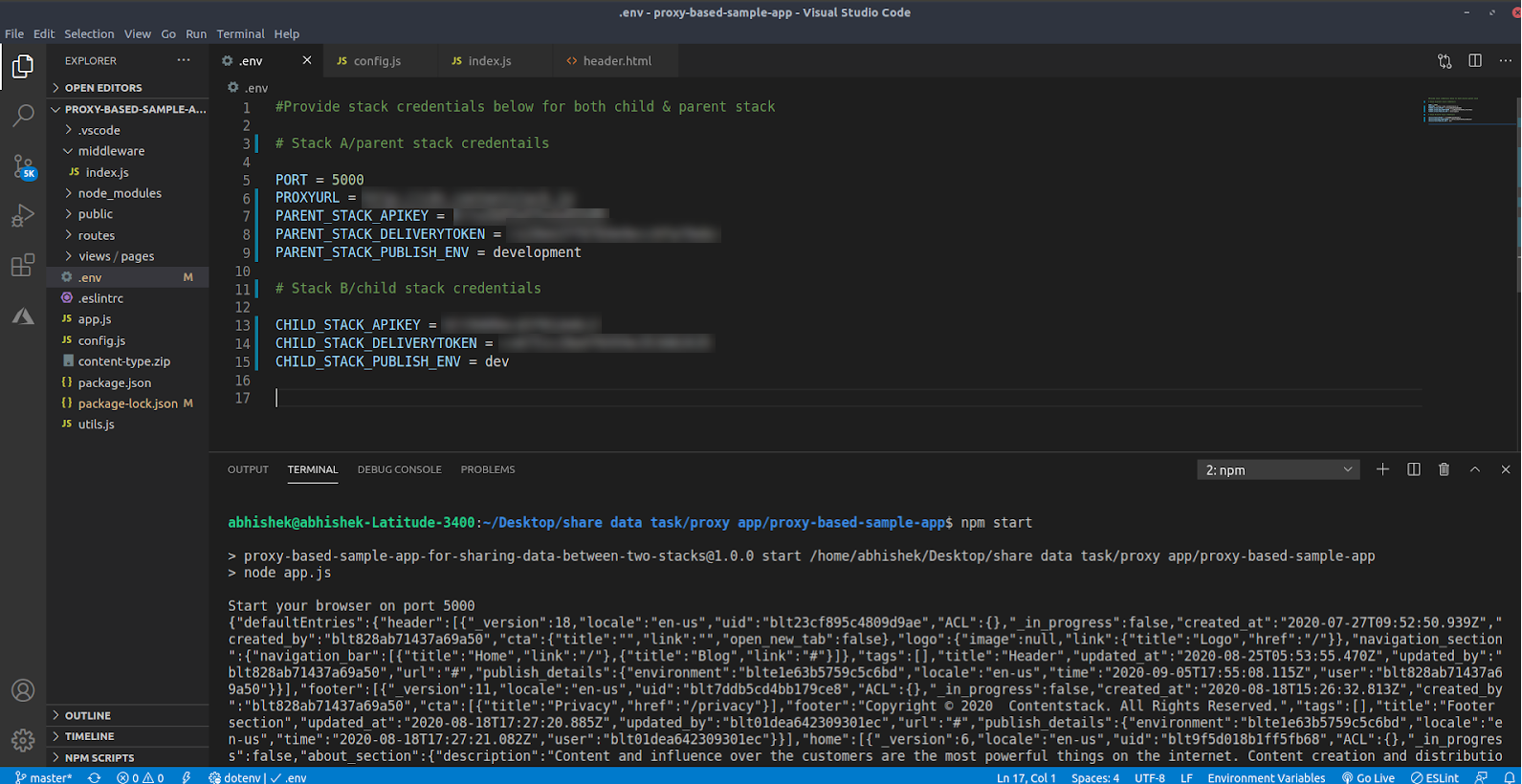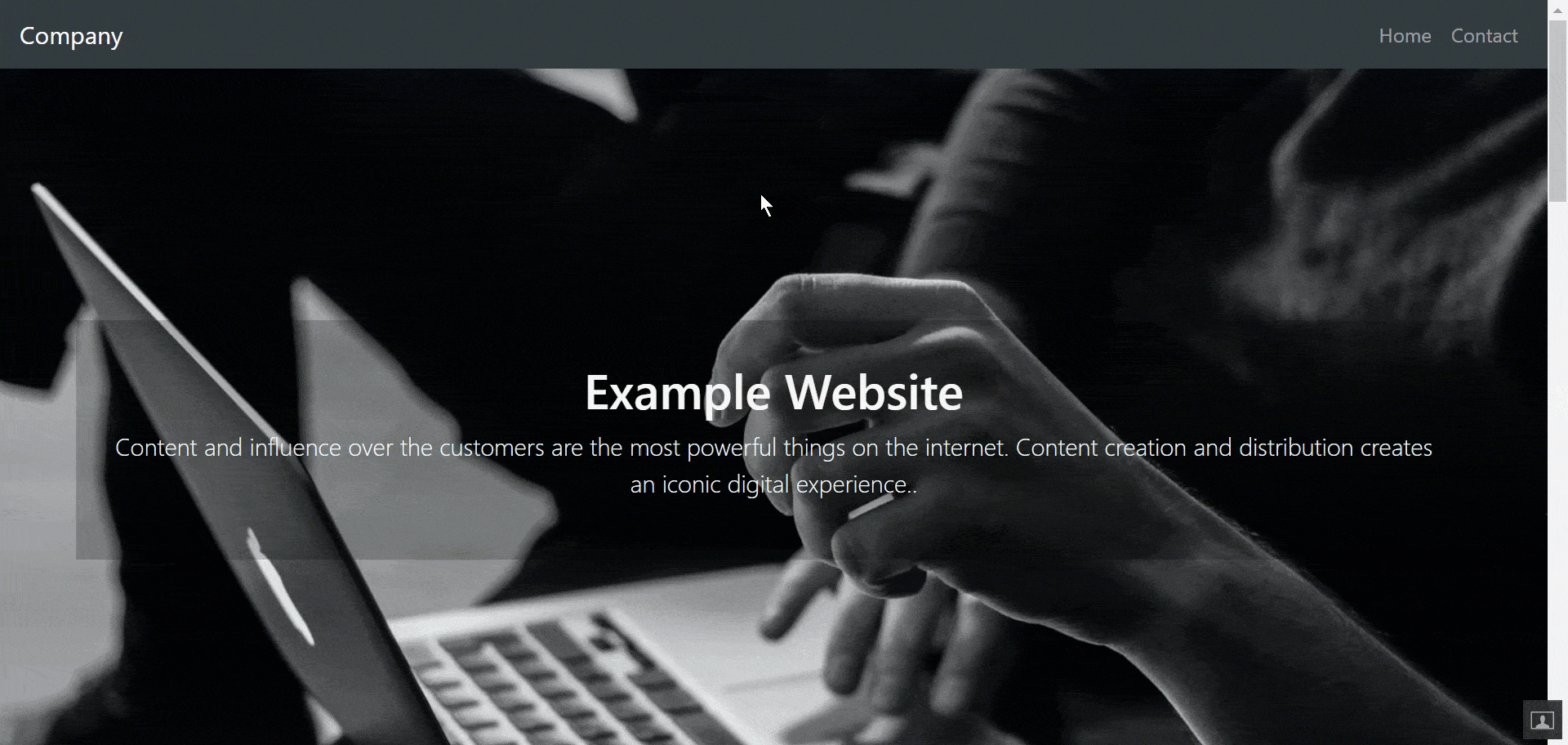Was this article helpful?
Thanks for your feedback
There can be many instances where we must use content stored in one stack in another stack. This sharing of data between stacks is a common practice when we have a lot of content spread across multiple stacks.
In this guide, we will discuss how to create a system that can help us share data between stacks by using a sample app and web proxy.
Process Overview: We will begin by building two stacks: Stack A (parent Stack) and Stack B (child Stack.) The sample app will consist of a header, footer, home page, error page, and a contact page as default components from the parent stack (stack A). This app will display previews of the recent blogs added in the child stack (stack B).
For this exercise, we will first start by downloading the code bundle from our GitHub repository. Within this code bundle, you will find the “stack-data” folder, which has two subfolders “parent-stack-data” and “child-stack-data” from which we will import the data into the stacks that we will create in the next step.
When creating stacks for this exercise, remember that we need two separate stacks, a parent stack and a child stack.
After you create the stacks, use the Contentstack CLI to import entries and assets to both the parent as well as the child stacks. Perform the following steps in order to do this:
Perform the following steps in order to do this:
npm install -g @contentstack/cli
csdx auth:login
csdx cm:import -A -s <stack_ApiKey> -d <path_of_folder_where_content_is_stored>
Repeat the above steps to import data into the child stack.
So far, we have created the following content types and imported entries and assets into them.
Note: For this exercise, you need to ensure that both the parent and child stack should have en-us set as the master language.
For the parent stack (stack A) we have added the following content types:
Once you have imported entries and assets to the content types, they will look like this:

For stack B, we have imported the Blogs content type and its entries. When completed, it will look like this:

Now that your stacks are ready with the content types and the respective entries, let us move ahead with configuring the code of the sample app.


The final step of this experiment is to execute the code. In your root directory perform the following steps:
http://localhost:5000
You will see the following result:

This is how the two stacks communicate with each other. As you can see, the sample app enables the parent Stack - Stack A, to display the preview of the blogs from the child Stack - Stack B.
The JSON response that is generated is shown below:
{
defaultEntries: {
header: [ [Object] ],
footer: [ [Object] ],
home: [ [Object] ],
error: [ [Object] ],
contact: [ [Object] ]
},
entries: [
{
_version: 8,
locale: 'en-us',
uid: 'bltbd31fa200947d8ac',
ACL: {},
_in_progress: false,
blog: [Object],
created_at: '2020-09-30T16:48:45.943Z',
created_by: 'blt828ab71437a69a50',
tags: [],
title: 'Blogs',
updated_at: '2020-09-30T17:31:29.990Z',
updated_by: 'blt828ab71437a69a50',
url: '/blogs',
publish_details: [Object]
}
]
}As you can observe from the above JSON response, there are no individual calls that are made to fetch entries for our sample app, therefore there is no need for individual APIs.
Notice the default entries object from our original response consists of default entries i.e header, footer, home, error, and contact from parent Stack (Stack A)
defaultEntries: {
header: [ [Object] ],
footer: [ [Object] ],
home: [ [Object] ],
error: [ [Object] ],
contact: [ [Object] ]
}In the following response, you can see the previews of blogs added in the child Stack (Stack B)
entries: [
{
_version: 8,
locale: 'en-us',
uid: 'bltbd31fa200947d8ac',
ACL: {},
_in_progress: false,
blog: [Object],
created_at: '2020-09-30T16:48:45.943Z',
created_by: 'blt828ab71437a69a50',
tags: [],
title: 'Blogs',
updated_at: '2020-09-30T17:31:29.990Z',
updated_by: 'blt828ab71437a69a50',
url: '/blogs',
publish_details: [Object]
}
]This is how you get a common response for both of your entries (default and blogs) from two separate Stacks within a single JSON response using web proxy implementation.
Was this article helpful?
Thanks for your feedback